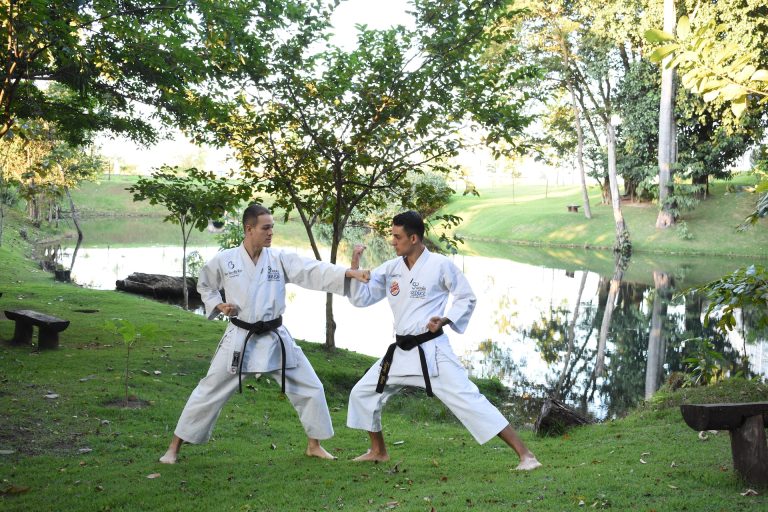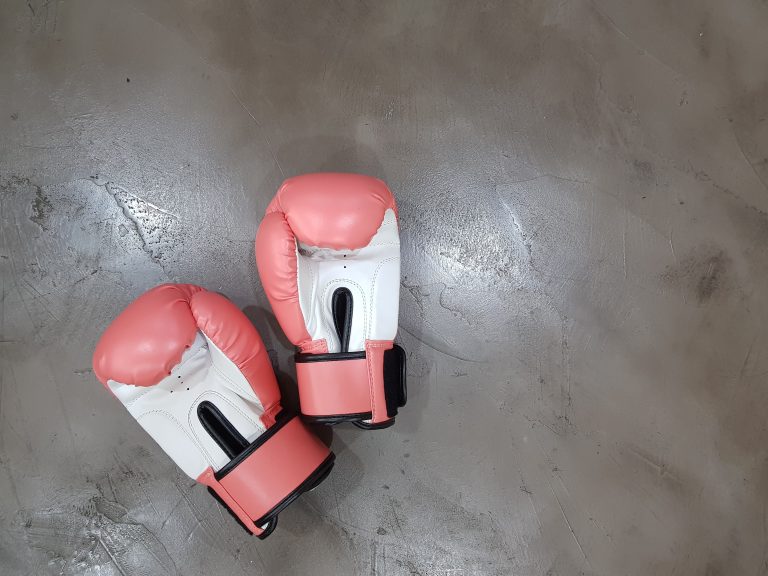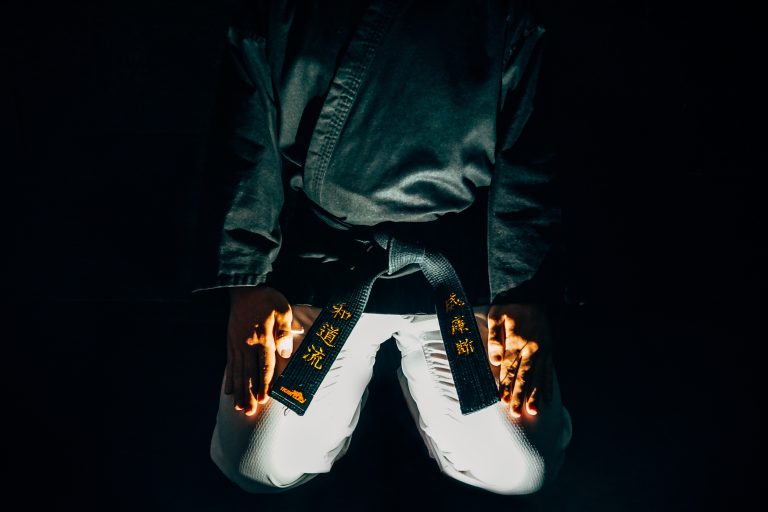How to Develop Effective Karate Kicking Techniques
Kicking is a major component of karate, and it’s an essential skill for any aspiring karateka. Whether you’re a striking martial artist working in the traditional forms of karate, or a modern mixed martial artist seeking to introduce diverse methods of attack into your training and challenge your opponent, developing effective kicking techniques is key to success. In this blog post, we’ll cover the basics of karate kicking and explore how to develop effective kicking techniques. Let’s get started.
Understanding the Basics of Karate Kicks
Before we can begin to develop effective kicking skills, it is essential to understand the basics of perfect karate kicking technique and form. Generally, the foot is used as the striking force and so it’s important to have strong foundations in footwork drills, as well as developing good balance, coordination, flexibility and power. Here are some important considerations for a successful karate kick:
- The kicking foot should ideally be pointed towards the target at all times.
- The upper body should remain erect and still throughout the technique.
- The ball of the foot should make contact with the target, typically replacing the hand.
- Transfer your bodyweight through the kick by rotating your hips into the technique.
Developing Balance and Coordination
Having good balance and coordination is essential for any kicking techniques to be successful. To develop these two attributes, a range of exercises should be practiced in your regular training sessions. Here are a few drills that can help with these important aspects:
- Jumping Drills: Jumping drills are a great way to improve your balance and coordination as the focus is on jumping from one foot to the other. Examples include double jumps, lateral jumps and vertical jumps.
- Skipping: Skipping ropes are a great tool for developing coordination and balance. There are many variations to try out, including changing pace (slow – fast) or alternating feet.
- Bounding Drills: Bounding drills are a key part of any fighter’s training regime as they allow you to generate explosive power and move quickly on your feet. Jogging quickly with big strides is a simple example of movement specific to any martial art practice.
Developing Power and Flexibility
Power and flexibility are two other important attributes in karate kicking techniques. To become an efficient karateka, be sure to include regular stretching as part of your training regime in order to increase both power and flexibility. Weight-bearing exercises as well as plyometric drills can be used as part of your strengthening regime whilst learning karate. Here are a few exercises you could use:
- Lunges: Lunges are a classic weight-bearing exercise which target several muscle groups and helps to improve flexibility. Start by lunge-stepping one foot forward then dropping your hips towards the ground, being sure to keep your upper body balanced and under control.
- Squats: Squats are another weight-bearing exercise which can help you to develop power and flexibility; when performing this exercise make sure you maintain correct posture and a flat back throughout the entire movement.
- Jump Squats: Also known as plyometric jumps, jump squats develop explosive power which is essential for kicking power. Start by performing a regular squat then explosively jump up into the air as if you were trying to touch the ceiling.
Integrating Drills into Your Karate Practice
Once you’ve developed some basic knowledge of balance and coordination, power and flexibility, it’s time to start integrating what you’ve learnt into your karate practice. Aside from regular training sessions, it’s important to focus on the fun elements that come with mastering the martial art; drilling and perfecting the kicking techniques requires patience and dedication. Here’s how you can begin to integrate drills into your karate practice:
- Dry Drills: Dry drills are single-person exercises allowing you to focus on delivering precise strikes consistently. Focus on perfecting your technique here as there are no opponents present during this type of drilling session.
- Single-Person Drills: This form of practice involves two people but you still focus on single techniques or ‘bursts’ of techniques; these are great if you’re working on precise striking techniques.
- Multiple-Person Drills: These drills involve more than one person, allowing you to practice complex attack patterns and chain combinations with multiple partners.
- Sparring: Sparring increases confidence when performing kicking techniques in live competition. Start by pairing up with someone who has similar attributes in terms of height, weight and experience to benefit both yourself and your opponent.
How To Develop Effective Karate Kicking Techniques: Wrapping Up
Kicking is an integral part of karate, and developing effective kicking techniques won’t come without hard work and dedication. Utilize dry drills, single-person drills and multiple-person drills in order to improve and perfect striking techniques, whilst integrating balance drills, weight-bearing exercises and plyometric jumps into your training regime. Finally, sparring is a great way to boost confidence and bridge the gap between drilling and actual combat. With patience and dedication, any budding karateka can refine their kicking skills with time and consistent practice; good luck!
Understanding the Basics of Karate Kicks: Frequently Asked Questions
Karate is a martial art known for its highly effective kicks, which can deliver devastating blows to an opponent. If you’re new to the art of karate, you likely have some questions about the basics of karate kicks. In this post, we’ll answer some of the most frequently asked questions about this essential aspect of karate.
What is a karate kick?
A karate kick is a type of strike that uses the foot, knee, or leg to deliver a blow to an opponent. The goal of a karate kick is to generate power from the hips and core to create a forceful strike that can cause significant damage to an opponent.
What are the different types of karate kicks?
There are several types of karate kicks, including:
1. Front kick (mae geri)
The front kick is a straight-forward kick that targets the opponent’s midsection or face. It is one of the most basic and effective karate kicks, designed to create distance between the attacker and the opponent.
2. Side kick (yoko geri)
The side kick is a powerful kick that targets the opponent’s midsection, ribs, or head. It is a lateral kick that involves pivoting on one foot and delivering a strike with the other foot.
3. Roundhouse kick (mawashi geri)
The roundhouse kick is a versatile kick that can target the opponent’s midsection, legs, or head. It involves swinging the leg in a circular motion, which generates significant force and momentum.
4. Back kick (ushiro geri)
The back kick is a kick used to fend off an attacker behind you. As the name suggests, it involves kicking backward, targeting the opponent with the heel of the foot.
5. Axe kick (uchi uke geri)
The axe kick is a downward striking kick targeting the top of the head or shoulders of the opponent. It involves raising one leg and then chopping downward with the heel of the other leg.
How do you execute a karate kick?
Executing a karate kick involves several steps:
1. Begin in a fighting stance, with your feet shoulder-width apart and your weight evenly distributed.
2. Shift your weight to your back foot, then pivot on the ball of your back foot to face your opponent with your front foot.
3. Lift your knee to your chest, then extend your leg to strike your opponent with your foot.
4. Recoil your leg, then return to your starting position.
What are the benefits of karate kicks?
Karate kicks provide several benefits, including:
– Increased leg strength and flexibility
– Improved balance and coordination
– Enhanced cardiovascular fitness
– Increased mental focus and discipline
– Effective self-defense skills.
How do I improve my karate kicks?
Improving your karate kicks takes practice and technique. Here are some tips to help you improve your kicks:
– Practice your form and technique regularly.
– Warm up before training to prevent injuries.
– Engage in strength and flexibility training to improve your leg muscles.
– Use a heavy bag or target pad to practice striking.
– Get feedback from your instructor and peers to improve your technique.
– Focus on your breathing and mental focus to enhance your performance.
Conclusion
Karate kicks are an essential part of this martial art, and mastering them requires practice and technique. Hopefully, this post has answered some of your most frequently asked questions about the basics of karate kicks. Remember to practice regularly, stay focused, and seek guidance from your instructor to improve your karate kicks and become a skilled practitioner of this ancient martial art.
Inhaltsverzeichnis






